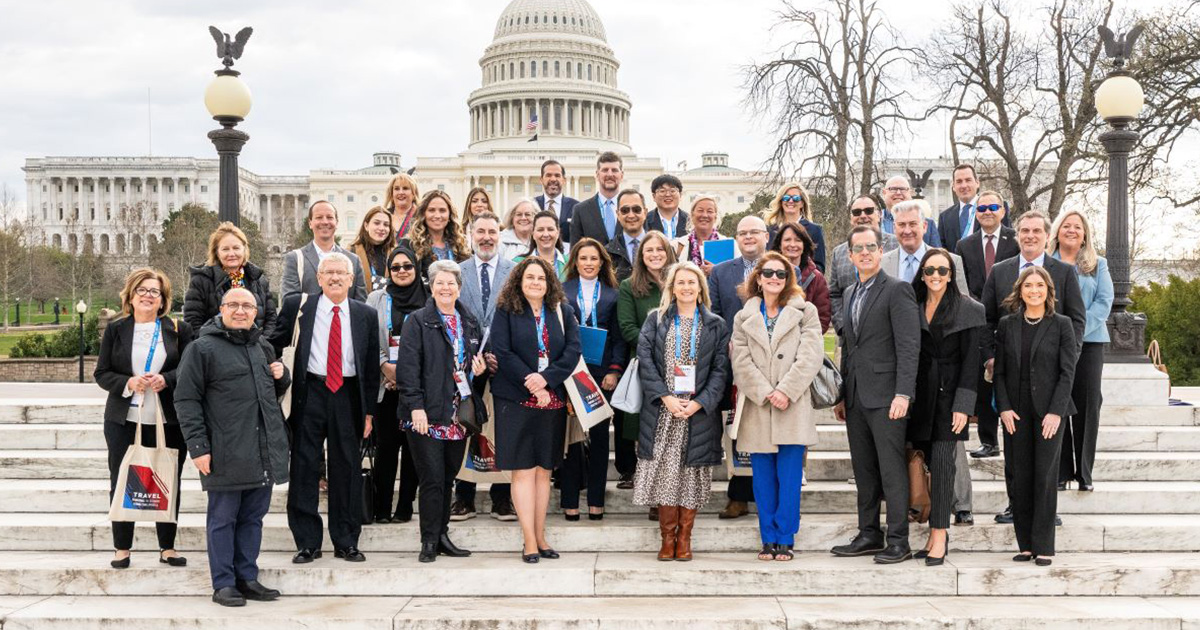New International Travel Forecast
Recently, U.S. Travel Association released its updated international travel forecast, which projects 65 million international arrivals in 2023 (which is 82% of pre-pandemic levels). The forecast also projects that international arrivals and spending will fully recover to 2019 levels by 2025.
According to the forecast, the travel industry experienced ten straight years of growth prior to the pandemic. Knowing this, the forecast extends to 2026 and also includes an analysis on where inbound travel should be in terms of growth had the pandemic not occurred.
In an upside scenario, the forecast predicts the U.S. could gain an additional 5.4 million visitors and $9 billion in spending by the end of 2022 with the pre-departure testing requirement now having been removed as of June 12—a move U.S. Travel Association is praising.
"The Biden administration is to be commended for this action, which will welcome back visitors from around the world and accelerate the recovery of the U.S. travel industry," said Roger Dow, U.S. Travel Association President and CEO.
The forecast comes on the heels of a decently disappointing jobs report in May, demonstrating how the travel and tourism industry remains on a long road to recovery.
"With only 84,000 jobs added in May, Leisure & Hospitality employment remains 7.9% below pre-pandemic levels, with 1.3 million of these jobs still lost," said Tori Emerson Barnes, U.S. Travel Association Executive Vice President of Public Affairs and Policy. "While many industries have now nearly or fully recovered and are posting job openings focused on growth, L&H is desperately seeking to fill jobs just to recover to where it was in 2019."
Earlier this month, in an effort to support the U.S. travel and tourism industry, the federal government shared a new National Travel and Tourism Strategy, an ambitious five-year goal of attracting 90 million international visitors to the United States each year. The strategy follows a four-point approach:
1. Promoting the United States as a Travel Destination.
Goal: Leverage existing programs and assets to promote the United States to international visitors and broaden marketing efforts to encourage visitation to underserved communities.
2. Facilitating Travel to and Within the United States.
Goal: Reduce barriers to trade in travel services and make it safer and more efficient for visitors to enter and travel within the United States.
3. Ensuring Diverse, Inclusive, and Accessible Tourism Experiences.
Goal: Extend the benefits of travel and tourism by supporting the development of diverse tourism products, focusing on under-served communities and populations. Address the financial and workplace needs of travel and tourism businesses, supporting destination communities as they grow their tourism economies. Deliver world-class experiences and customer service at federal lands and waters that showcase the nation's assets while protecting them for future generations.
4. Fostering Resilient and Sustainable Travel and Tourism.
Goal: Reduce travel and tourism's contributions to climate change and build a travel and tourism sector that is resilient to natural disasters, public health threats, and the impacts of climate change. Build a sustainable sector that integrates protecting natural resources, supporting the tourism economy, and ensuring equitable development.
Roger Dow, President and CEO of the U.S. Travel Association, shared his thoughts following the announcement of the new strategy.
"The recovery of American travel jobs and visitor spending hinges upon the annual growth of international inbound travel. America must apply every possible resource at rebuilding it to full strength to benefit American workers and businesses in every pocket of the country," Dow said. "The new National Travel and Tourism Strategy comes at an important time when international travel spending in the U.S. was still 78% below 2019 levels in 2021."
"We commend the leadership of Commerce Secretary Raimondo and the Tourism Policy Council and applaud the ambitious goal of attracting 90 million visitor arrivals annually in the U.S. by 2027," Dow continued. "The strategy sets out specific actions that the government can take to rebuild our travel economy and make it more globally competitive than it was before the pandemic."
View the forecast in its entirety by visiting U.S. Travel Association.
Written by Sarah Suydam, Managing Editor for Groups Today.



